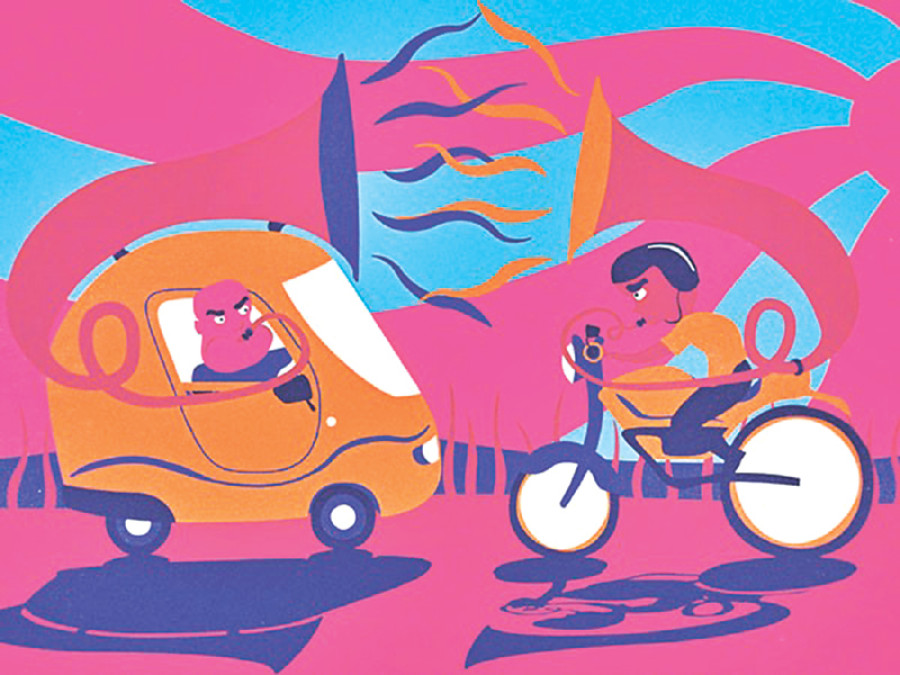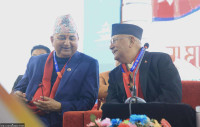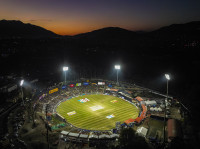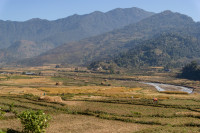Opinion
Chaos in Kathmandu
How about making it compulsory for government employees to use public transport?
Dinesh Malla
Driving in Kathmandu has become extremely chaotic due to lawlessness, inadequate and non-functional traffic signals, overcrowded roads and rowdy drivers. The result is gridlock leading to delays, economic losses and air pollution. Zebra crossings have become a trap for pedestrians. The design of these crossings is faulty, and there are no signs to warn motorists that there is a road crossing ahead. In addition to a sign, there should be a hump to make vehicles slow down and give right of way to pedestrians. The number of cars and motorbikes has surpassed the capacity of the roads. There are too many vehicles on the roads and driving is going to make people insane. The most pathetic part is that law enforcement agencies have remained silent spectators without coming up with solutions.
Most major roads in the city have been widened to make vehicle movement smoother. However, this effort has been undermined as the widened area has been turned into parking space in places like Baghbazaar in Kathmandu and Kumaripati in Patan. The question here is whether it makes sense to forcefully widen the roads without paying compensation to landowners and create parking lots by making a mockery of the original objective. In order to ease the parking problem, the concerned authorities should build multi-storeyed parking buildings on government land. After that the private sector should follow suit.
The three Es
The traffic situation can be improved by following the three Es—engineering, education and enforcement of the law. First and foremost, road junctions need to be redesigned in places like Thapathali, Kalimati and other strategic locations. Overpasses need to be built for vehicles at road junctions so that they can pass without interfering with cross traffic. More pedestrian overpasses need to be built.
Another cause of traffic pandemonium is the unruly manner in which motorcyclists manoeuvre as if the road was a race course. The culture among bikers is that they will stay in line at a gasoline station for 24 hours to buy 3 litres of petrol, but they do not have the patience to wait for a few seconds and not overtake from the wrong side. The rule of ‘might is right’ prevails even though we are in the 21st century. To further smoothen the flow of traffic in the city, more roads must be converted to one-way traffic like at Dillibazaar.
When it comes to enforcing law on the roads, the authorities need to do more. If enforcing the law on drinking and driving in the city can be an example to the world, there is no reason why other such regulations cannot be applied. More law enforcement personnel need to be deployed on the streets and heftier penalties on those who contravene the law should be imposed. Rash driving needs to be totally prohibited on the streets, especially with regard to bikers and bus drivers.
Another element that needs to be inculcated among the general public is education on traffic rules. Pedestrians must be taught to use zebra crossing or overpasses mandatorily. No jaywalking should be allowed at any cost. What is really surprising is that people have the habit of walking on the roads even where there are footpaths. Use of footpaths must be made compulsory. The speed limit needs to be enforced and signs should be installed in areas prone to accidents.
Good public transport
In the long run, zoning laws should be implemented so that school buses do not have to pick up students from another zone. The operating hours of educational institutes can even be changed to reduce traffic on the streets. School buses are also the cause of traffic jams at places like Satdobato Crossing. In such areas, schools should be encouraged to change the timing of their classes so as to not interfere with regular office hours.
Last but not least, the city needs better public transport so that even our honourable leaders and bureaucrats will ride the bus to office and help reduce the volume of traffic. For this, we need to plan electric trains and buses within the city and beyond. Electric bus services like the trolley bus need to be started along the Ring Road, and the old one from Tripureshwor to Suryabinayak should be revived and extended. For this to happen, our planners and implementers must be made more people-oriented to share the inconveniences of the city’s ordinary denizens. How about making it compulsory for all government employees to use public transport so that it will set an example for ordinary people to use it?
Malla is a development management specialist




 12.12°C Kathmandu
12.12°C Kathmandu










